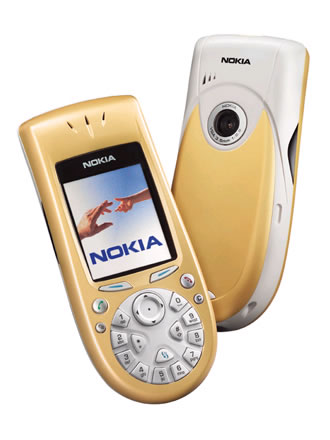 1. Video capture
1. Video capture
Tempting though it was to include the 7650 itself for having a camera at all, that's more of an inclusion than an innovation. The Nokia 3650 included a dedicated video capture mode. Yes, the frame size was 176 by 144 pixels, 'MMS quality', but hey, at least we had moving images for the first time. And, on the 176 by 208 pixel screens of the day, these videos looked passable...
2. Dedicated shutter key
The first smartphone that had a camera that was good enough to really consider leaving a compact/standalone camera at home was the Nokia N70, in part due to its massive (for the time) two megapixel resolution, but also due to this next innovation - a dedicated camera shutter key. Now you could turn the phone on its side and effectively have a landscape viewfinder and a button right where your index finger needed it to take the snap.
 As an aside, even in 2012, the majority of smartphones still don't have dedicated shutter buttons, preferring either touchscreen virtual shutter buttons (as on most iPhones - though there's now a volume button official 'hack' - and Android phones) or d-pads (in the case of Blackberrys). Which is a shame, I'm a huge shutter button fan - used right, they transform the experience.
As an aside, even in 2012, the majority of smartphones still don't have dedicated shutter buttons, preferring either touchscreen virtual shutter buttons (as on most iPhones - though there's now a volume button official 'hack' - and Android phones) or d-pads (in the case of Blackberrys). Which is a shame, I'm a huge shutter button fan - used right, they transform the experience.
3. Neutral density filter
"Neutral what?", I hear you ask? This is a filter, debuted on the Nokia N73, which swings into place automatically when conditions are very bright (e.g. direct sunlight), so as to make sure the phone camera sensor doesn't get overwhelmed (with predictable 'blown out' results) - in practice, it means that sunny photos look clearer, with better detail in even the brightest spots. Many of the Nokia phones mentioned in this feature have subsequently had ND filters in their cameras, most notably including the N95/N82 and N8.
4. Auto-focus
One distinguishing feature of standalone cameras was that you could focus on things, whereas phone cameras up til this point had had 'fixed focus' units, producing acceptable results from about a metre to somewhere near infinity, though it was hard to push the boundaries in any case because the resolution wasn't high enough to really tell whether some things were completely in focus or not. And close-up (macro) shots were out of the question.
The Nokia N90 changed all that, with a genuine auto-focus (moving) lens mechanism. Now you could shoot snaps of close-up objects and focus on whatever you wanted - the subject was always crisp.
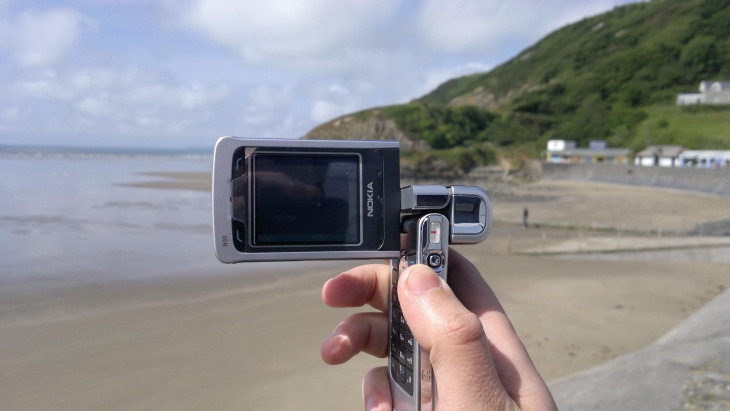
5. Carl Zeiss/branded optics
Something else that debuted in the Nokia N90 was an association with a dedicated camera optics company, in this case Carl Zeiss, using design and manufacturing knowhow to produce camera optics that enabled clearer, more detailed photos. Some other companies followed suit, notably Sony Ericsson and LG using Schneider-Kreuznach optics in some of their devices, but Nokia's Carl Zeiss link is by far the most prominent, continuing right to the present day (in the 808 PureView, of which more below).
6. Stereo audio in video capture
Video capture had been steadily improving, from MMS-quality 176 by 144 pixel frames to full VGA (640 by 480) pixel frame resolution in the 'transformer' phone, the legendary Nokia N93, now at 30 frames per second. Amazing stuff for 2006 - we still have plenty of phones shooting at VGA today in 2012 in the mid-tier!
But these were gradual improvements overall - one step change that the N93 introduced was stereo audio capture in videos - audio from N93 videos was surprisingly immersive.
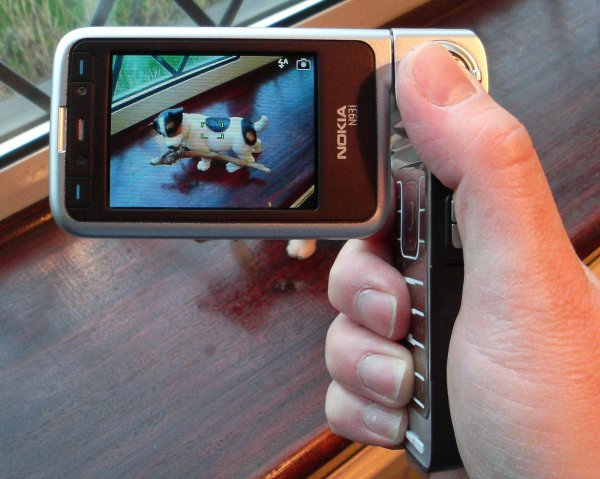
NB. Shown is the N93i, a sleeker N93 variant, with the main difference being that the stereo mikes were positioned further from the noisy optical zoom motor components...
7. 1/3.2" 'proper' sensor
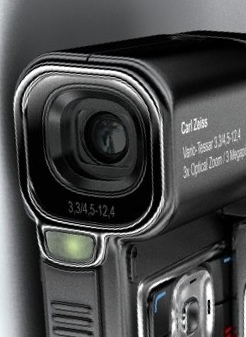 I had to think a bit about how to include sensor size into this 'innovations' list, since gradually increasing sensor size isn't actually an obvious innovation. I settled on highlighting a few of the obvious sensor milestones. This is one - a 1/3.2" sensor, in the Nokia N93, was amazing for 2006. AMAZING. Like nothing seen so far. In fact, this is still the sensor size used by most top end smartphones (think iPhone 4S, Sony Xperia S) even today, in 2012. Admittedly, the N93's sensor was somewhat cruder in terms of performance, but then this was six years earlier. In practice, the N93 was able to capture good photos in dimmer light conditions than had been possible before and to create better looking photos with less noise at all light levels.
I had to think a bit about how to include sensor size into this 'innovations' list, since gradually increasing sensor size isn't actually an obvious innovation. I settled on highlighting a few of the obvious sensor milestones. This is one - a 1/3.2" sensor, in the Nokia N93, was amazing for 2006. AMAZING. Like nothing seen so far. In fact, this is still the sensor size used by most top end smartphones (think iPhone 4S, Sony Xperia S) even today, in 2012. Admittedly, the N93's sensor was somewhat cruder in terms of performance, but then this was six years earlier. In practice, the N93 was able to capture good photos in dimmer light conditions than had been possible before and to create better looking photos with less noise at all light levels.
8. Optical zoom
And so we come to an innovation which didn't take off. Yet another unique feature about the N93 was that it featured a full optical zoom, i.e. a complex set of moving optical elements that could provide 3x zoom without compromising sensor quality. This was made possible because of the 'barrel' camera design, being deep enough for the larger optical assembly. Other disadvantages of optical zoom that hampered it taking off included motor noise in video capture and reduced light levels at the sensor.
The only other phone which had optical zoom was the ill-fated Samsung G810, launched and then never mass produced, but unique in that it had both optical zoom and....
9. Xenon flash
I've been (justifiably) ranting about Xenon flash in camera phones for so long that it's possibly become boring for most readers? Think of all the best camera phones of the last decade though. Nokia N82, Sony Ericsson K850, C905 and Satio, Nokia N8. Think of any one of the thousands of models of standalone digital cameras. What have they all got in common? That they could take great shots anytime, anywhere? Yes, and the reason for this was that indoor and low light shots were completely taken care of with a proper Xenon flash, a hundred times brighter than the weedy LED flash we get palmed off with in most so-called 'camera phones'.
The first on the block in mobile was the Sony Ericsson K800, shown below, followed by, in 2007, the K850i, the LG Viewty and Nokia N82. The latter was by far the most significant of the three, in that it was also a full smartphone, giving music and maps and email while also being a full Xenon-equipped camera. It also featured a protected camera glass, as did the N95, a phone that's (amazingly) not otherwise mentioned in this feature(!)
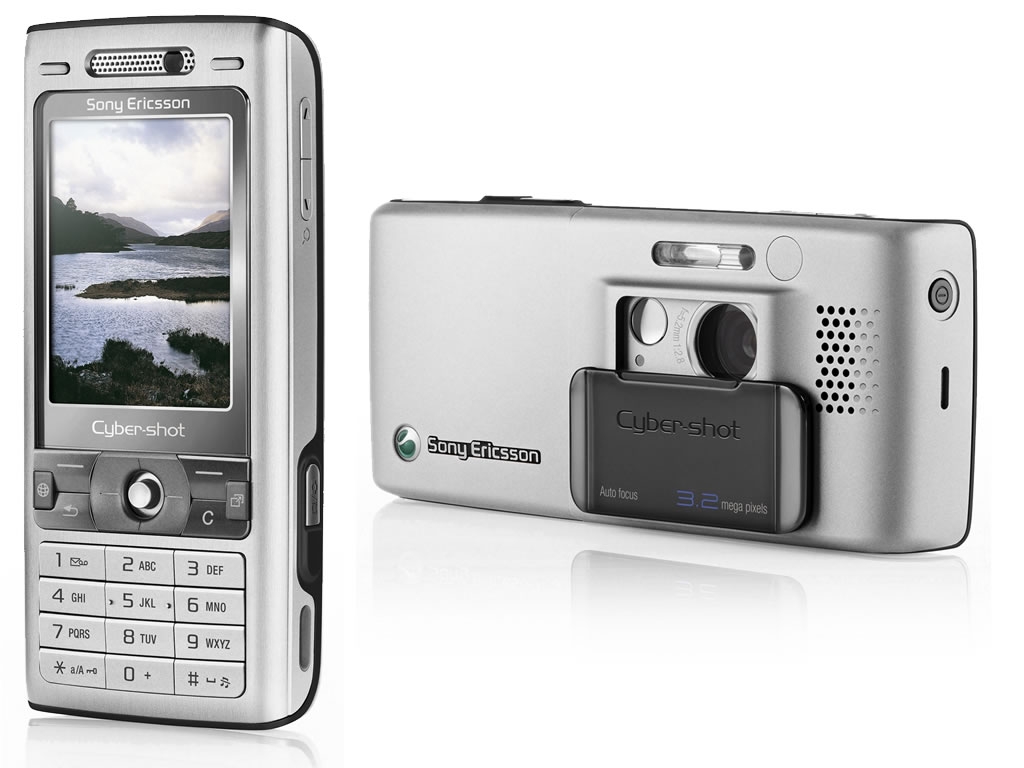
10. Intelligent digital zoom
Phone cameras up until 2009 allowed zooming in video capture mode by cropping down the standard capture resolution and then blowing up the resulting video frame again, with the result that everything went blocky. In fact, most phone cameras still behave that way for zooming. But not the Nokia N86, which uses the full native resolution of its sensor (high at 8mp, already) so that when you zoom into its VGA video frame, increasingly more of the underlying resolution is used, right down to 1:1, with a VGA area of the 8mp sensor used as-is for (roughly) 3x zoom, i.e. with no loss of information or unnecessary pixellation. Once you get what's going on, you wonder why all phone cameras don't behave this way - I call this intelligent digital zoom and it has popped up again on the N8, on the 808 PureView and in many Windows Phone handsets.
11. Variable aperture
A perennial problem with phone cameras is that they're small, cheap and inflexible. So when faced with extremes of light and dark (say, the difference between a bright sunny day and then walking indoors) they don't cope well. Bright spots and reflections get 'blown out' (see the entry for 'Neutral Density filter' above) and then the opposite happens indoors and there's not enough light to avoid blurring of moving things and lots of digital noise.
One innovative solution tried on the aforementioned N86 was to have a 'variable aperture', essentially an extra mechanical element in front of the lens assembly that is open wide most of the time (F2.4) but which closes right up to F4.8 when things are very bright. It's a solution that works brilliantly for sunny photos - there have been some amazing examples of high quality N86 shots in searing sun - but the extra depth required (another millimetre or so) and the extra cost and complexity didn't really make sense and Nokia quietly dropped the idea in favour of going back to ND filters.
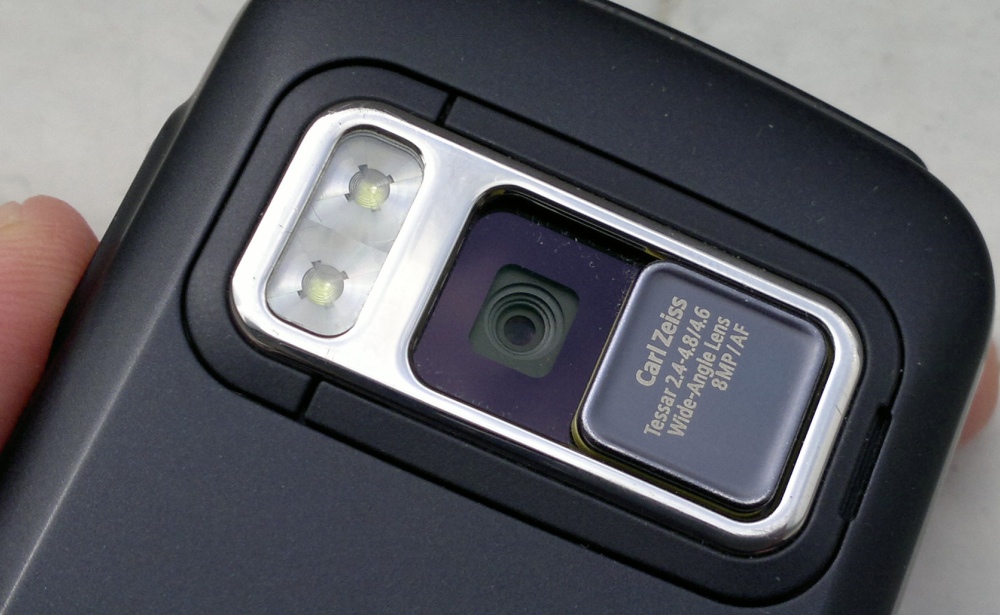
12. MEMS digital sound
Also debuted on the Nokia N86 was the use of a MEMS digital microphone for audio in video capture, effectively combining the microphone element directly into the chip that's digitising the received sound - the end result is CD-quality audio over a wide range of volumes and quite amazing. The system proved very successful and was subsequently built into the hardware designs for the 2010 N8, C7, E7 and the 2011 E6 and beyond, all of which capture audio just as well (though the N8 does so in stereo, as it has not one, but two MEMS mikes).
13. EDoF (Extended Depth of Field)
Introduced for the diminutive Nokia E52 and E55 back in 2009, and then rolled out to every non-camera-specialist device since in Nokia's line up, the controversial Extended Depth of Field technology was utterly ground breaking in the world of phone cameras, even if just about all the camera geeks (that'll be you, reading this article, then!) steadfastly turned up their noses at it. The idea of having a deliberately misshapen lens that could bring in focus points from many different distances and then fix it all in custom electronics to produce an image with all points (above 40cm) in focus was fairly inspired and I've seen first hand how easy it is for complete newcomers to take good snaps with EDoF.
?
The downsides of EDoF are not being able to take arty close-up shots of anything (I refer you to my previous comments about camera geeks!) and that the units themselves tend to be quite small - great for small, thin form factor phones, not so good for gathering light indoors. Will be ever see an EDoF unit with Xenon flash, I wonder? I'd buy one....!
EDoF has been used by some other manufacturers in selected models, not least Blackberry, but it's Nokia that has taken it to heart in a big way, for better or worse.
14. Built-in High Dynamic Range capture
The idea of taking three photos of the same scene, at different exposure levels, and then combining them to produce one super-enhanced High Dynamic Range image, isn't new, of course. People have beeen doing this with digital cameras for years, but it's almost a given that you need a tripod of some kind, so that the three shots are framed closely enough. Tripods and phones don't usually go together and most phones have only done HDR shots through third party software, often requiring extreme measures to keep the phone still enough, often requiring significant processing time after the three shots have been taken and often producing a result that's less than original resolution.
Apple changed all this with the iPhone 4, producing a camera with built-in HDR, i.e. the processing is all handled in the phone's GPU and not by the main processor - so it can be much, much faster, typically with bracketed shots being taken within a second of each other, with processing only a few seconds afterwards and at full original resolution. Yes, you still needed to keep the iPhone still, but HDR photography essentially came to the masses with this innovative release.
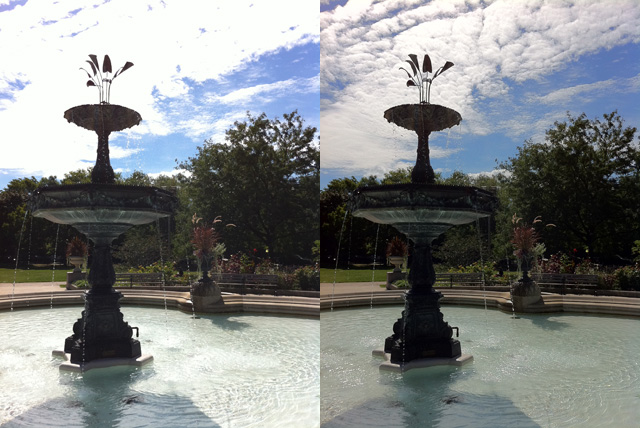
(normal iPhone 4 image vs built-in HDR option; source Ars Technica)
15. Standalone camera class (1/1.83") sensor
Again, I couldn't list every sensor size bump in this innovations list, or we'd have had a top 30, but the 1/1.83" sensor in the Nokia N8 is well worth noting here. Remember that sensor size goes up as the square of the optical format - the N8's sensor is approximately three times the size of that in almost every other smartphone in existence (apart from some of Nokia's own, mentioned above, e.g. N95/82/86). With photography being about capturing as many photons of light as possible, having a large sensor is an enormous factor and the N8's supersizing of the sensor was a step change for the industry (though see reference to the 808, below!)
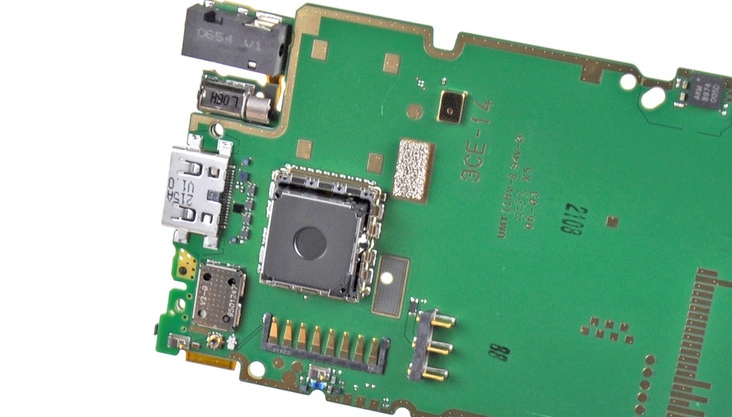
(source: iFixit)
16. Accelerometer stabilisation
As far as I know, this is also an iPhone-only innovation in phone cameras - the iPhone 4S introduced accelerometer-based digital video stabilisation (previous systems, e.g. in Nokia phones, had relied on software-based stabilisation by looking at the captured frames and comparing notable data points). In other words, as you shoot video in the iPhone 4S, the phone detects your movement/wobbles and allows for this in the real time processing of the video being captured. The end result is footage that's a tiny bit degraded from the original frame resolution but is much, much steadier, and looks better as a result.
17. Full use of circular sensor width
For the cameras in Nokia's N9 and Lumia 800/900, Nokia's engineers had something of a brainwave. Given that sensor chips are circular and that phones normally then take a 4:3 rectangle out of the circle, and given that most phone displays now have 'widescreen' aspect ratios anyway, why not also give the user a native 'widescreen' mode in the camera, using a thinner but wider slice of the circular sensor? Why not indeed, and this works rather well on the N9/800/900, whose sensor is shown diagrammatically below. Good to see those extra pixels being used, since 'widescreen' options in all previous phone cameras had simply involved cropping down the 4:3 frame as-is, which is horribly wasteful.
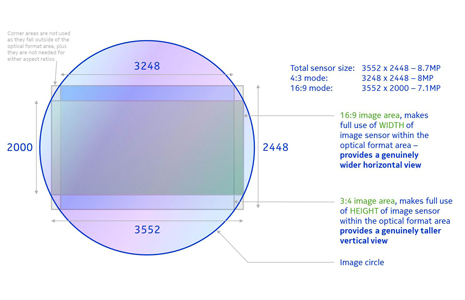
18. Stills capture while capturing video
We're now into 2012 in this list and still innovations keep coming. The HTC One X and One S have a camera with a unique selling point, made possible by a fast, custom image processing chip: you can take full resolution photos during video capture. This completely gets round the old 'do I shoot stills here or do I shoot some video?' dilemma, since you can now do both. The system works brilliantly and is sure to be copied, though it does effectively force the use of on-screen shutter buttons (since you need two!), which won't be liked by all.
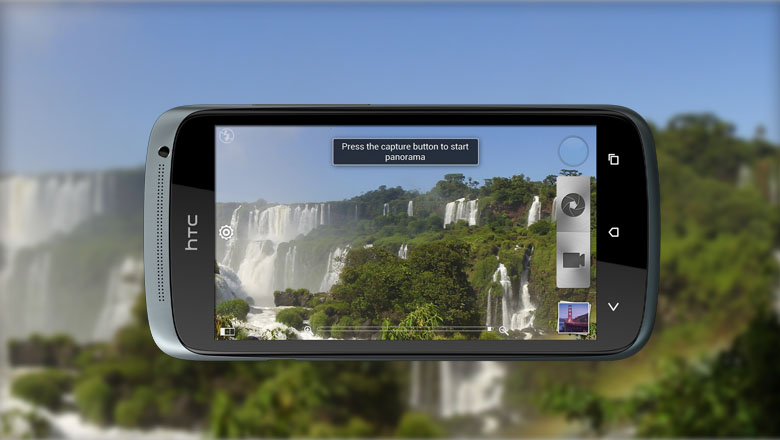
19. Instant unlock and capture
Previous phones (e.g. the Nokia Lumia 800) had included the ability to unlock the phone and launch the camera in one keypress (holding down the shutter key), but the Sony Xperia S went one step further. With the same long press on the shutter key, the phone would be unlocked, camera would be launched and a focussed photo taken. And this all happens very fast, within two seconds for the whole procedure. If this doesn't sound like a big deal then consider how often you've spotted something in your daily travels and wanted to snap it, but you just know that by the time you've got the phone out of your pocket, got the camera up and focussed, the moment would be gone. With the 'instant' unlock/launch/snap facility, you can have your focussed photo in under two seconds from first touching the phone in your pocket. OK, two seconds isn't exactly 'instant', but it's a lot faster than on any other phone system and, again, this flexibility is sure to be copied.
20. Sensor oversampling to remove noise and errors and to allow loss-free zoom
It was tempting to put in the Nokia 808 PureView's massive 1/1.2" sensor here as yet another huge sensor size change (over seven times that of the popular iPhone 4S/Galaxy S II camera, for example, and over twice as large as that in the N8), but it's more important to highlight why the 808's sensor is so big. You'll remember the abortive attempt, above, to use optical zoom in phone cameras? Too bulky, too fragile, too expensive, too many compromises. The 808's 41 megapixel sensor achieves two important goals. First, it's an innovative attempt to replicate 3x zoom digitally, so you can zoom right in when taking a photo and you're still using native pixels in the sensor, i.e. you're not losing any information, as is the case with traditional 'digital zooms'.
Secondly, and more importantly in my opinion, it means that photos at normal (e.g. 5mp or 8mp) resolution can be made up of oversampled pixels. So every single (virtual) pixel in every image in almost all light levels will be 'perfect', in that it will be intelligently produced based on light data being received by half a dozen physical pixels in the sensor. So digital noise is effectively abolished (no need for algorithms to be run later on, which means no digital 'artefacts' in the image either) and you get insanely high dynamic range, since the number of possible values for each virtual pixel is far higher than for a single physical one.
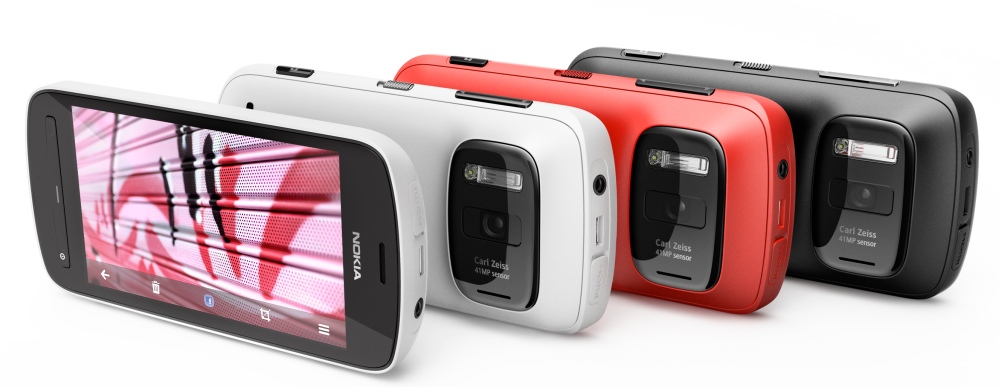
_________________
Phone cameras have come a long way in ten years. With the Nokia 808 PureView genuinely butting up against the laws of physics in terms of traditional optics and presenting an acceptable 'camera bulge', it's tempting to say that there's not that much more innovation to come. But then again, I'd have said much the same thing when the N95 came out in 2007 - who could have asked for more - and yet we then saw five years of insane innovation bringing us to the 808.
So all bets are off - where will we be by 2017? Your thoughts welcome!
Steve Litchfield, All About Symbian and All About Windows Phone, 22nd April 2012
No hay comentarios:
Publicar un comentario